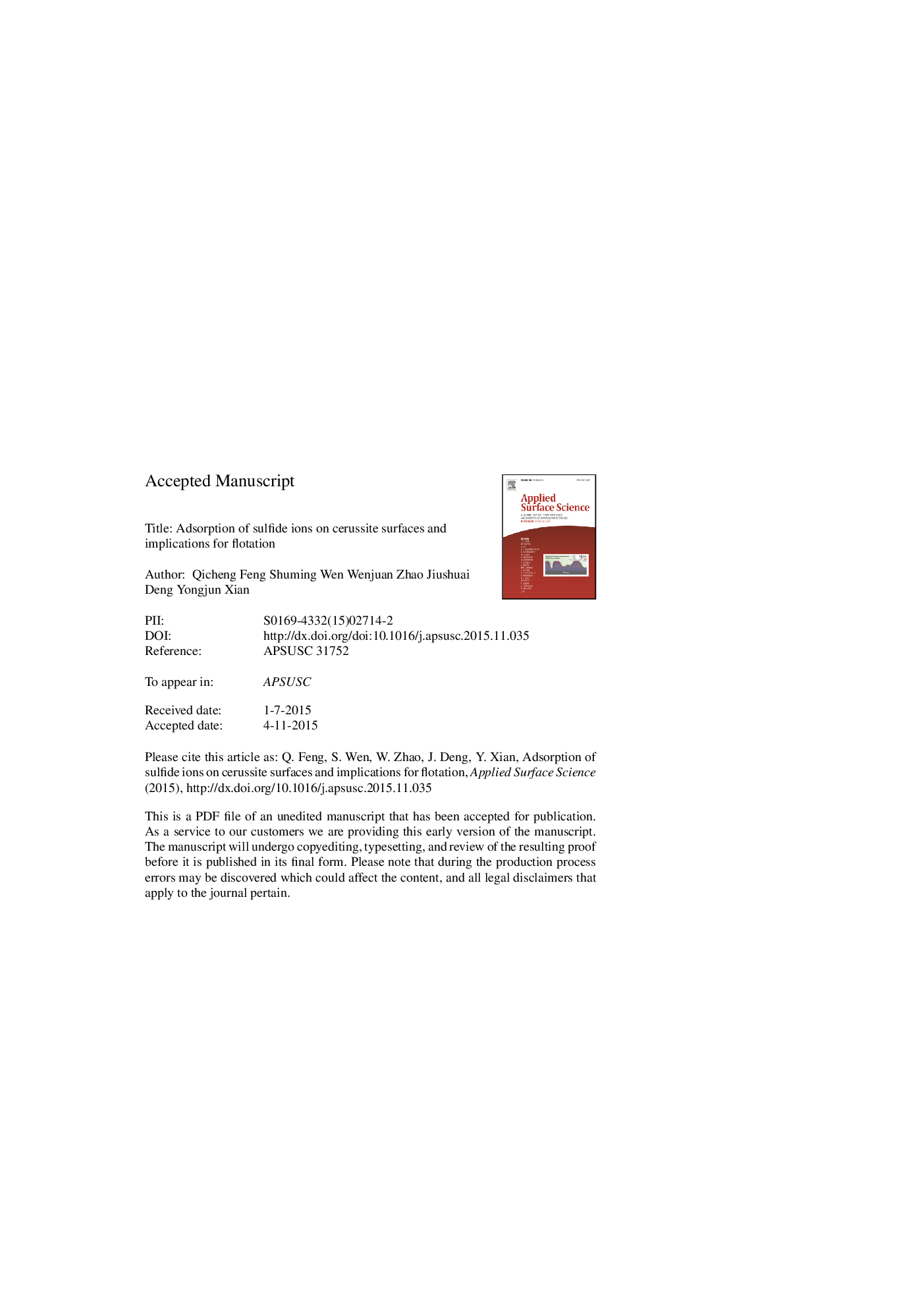| Article ID | Journal | Published Year | Pages | File Type |
|---|---|---|---|---|
| 5353746 | Applied Surface Science | 2016 | 36 Pages |
Abstract
The adsorption of sulfide ions on cerussite surfaces and implications for flotation were studied by X-ray photoelectron spectroscopy (XPS) analysis, micro-flotation tests, and surface adsorption experiments. The XPS analysis results indicated that lead sulfide species formed on the mineral surface after treatment by Na2S, and the increase in the Na2S concentration was beneficial for sulfidization. In addition to the content of lead sulfide species, its activity, which was determined by the proportion of sulfide, disulfide and polysulfide, also played an important role in cerussite sulfidization. Micro-flotation tests results demonstrated that insufficient or excessive addition of Na2S in pulp solutions has detrimental effects on flotation performance, which was attributed to the dosage of Na2S and the activity of lead sulfide species formed on the mineral surface. Surface adsorption experiments of sulfide ions determined the residual S concentrations in pulp solutions and provided a quantitative illustration for the inhibition of cerussite flotation by excessive sulfide ions. Moreover, it also revealed that sulfide ions in the pulp solution were transformed onto the mineral surface and formed lead sulfide species. These results showed that both of lead sulfide species and its activity acted as an important role in sulfidization flotation process of cerussite.
Keywords
Related Topics
Physical Sciences and Engineering
Chemistry
Physical and Theoretical Chemistry
Authors
Qicheng Feng, Shuming Wen, Wenjuan Zhao, Jiushuai Deng, Yongjun Xian,
